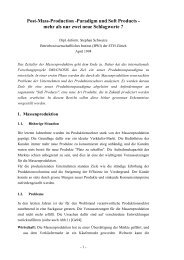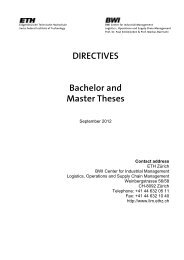The China Venture
The China Venture
The China Venture
Create successful ePaper yourself
Turn your PDF publications into a flip-book with our unique Google optimized e-Paper software.
of the currency management is to predict, prevent or hedge these currency risks as good as<br />
possible, which is of essential importance especially for operating in emerging markets. 72 <strong>The</strong><br />
most obvious way to hedge a long RMB exposure is to borrow in RMB. Some companies are<br />
borrowing even though they do not currently need RMB. Non-deliverable forwards are<br />
another way to hedge RMB exposures. This market is completely outside <strong>China</strong>. <strong>The</strong> market<br />
for these instruments are still underdeveloped. On top of that, there are significant internal<br />
accounting issues that will need to be resolved for most companies that use de rivative<br />
instruments to hedge their actual exposure in <strong>China</strong>. However, currency management is an<br />
issue with highest priority for foreign investors, because devaluation would fundamentally<br />
alter a joint venture’s future profitability.<br />
2.3.4 Conclusions<br />
<strong>China</strong> will continue to be an exciting market. Changes in <strong>China</strong> and the region will be<br />
challenging and perhaps frustrating. <strong>China</strong>’s economy faces a host of problems as it changes<br />
from being a centrally planned colossus into a decentralised market driven net of indepe ndent<br />
entities. <strong>The</strong> political unwillingness to seriously reform the loss making SOE sector is perhaps<br />
the single most serious obstacle to a balanced economic growth in <strong>China</strong>. <strong>The</strong> inefficiency of<br />
the SOE sector has arrested the development of the financial sector primarily via the former<br />
specialised banks. <strong>The</strong>y have been used as vehicles for subsidising SOEs and thereby social<br />
stability. <strong>The</strong> fact that policy lending has burdened the state banks with bad debt to the extent<br />
that they would be rendered ripe for bankruptcy by any Western standards, prevents them<br />
from fully pursuing independence and privatisation. Another obstacle for the state banks is<br />
their history as a part of a central planning administrative organisation as well as the<br />
provincial governments’ power apparatus. <strong>The</strong>y have only recently been subjected to the first<br />
experiments with market conditions and therefore lack basic banking skills, most notably the<br />
ability to carry out credit risk evaluation.<br />
This paper has shed some light on the structure and system of the Chinese financial system in<br />
general and of business finance in particular. <strong>The</strong> recent changes in banking and capital<br />
markets policies provide both opportunities and obstacles for PRC investors. Credit and <strong>China</strong><br />
risk limits have tightened, but recent political developments and increasing M&A<br />
opportunities give grounds for investor optimism. However due to the early stage of financial<br />
reforms in <strong>China</strong>, the study has had to leave questions open. Future research on the banking<br />
72 See Pausenberger/Glaum, 1993, p. 764-767.<br />
50






